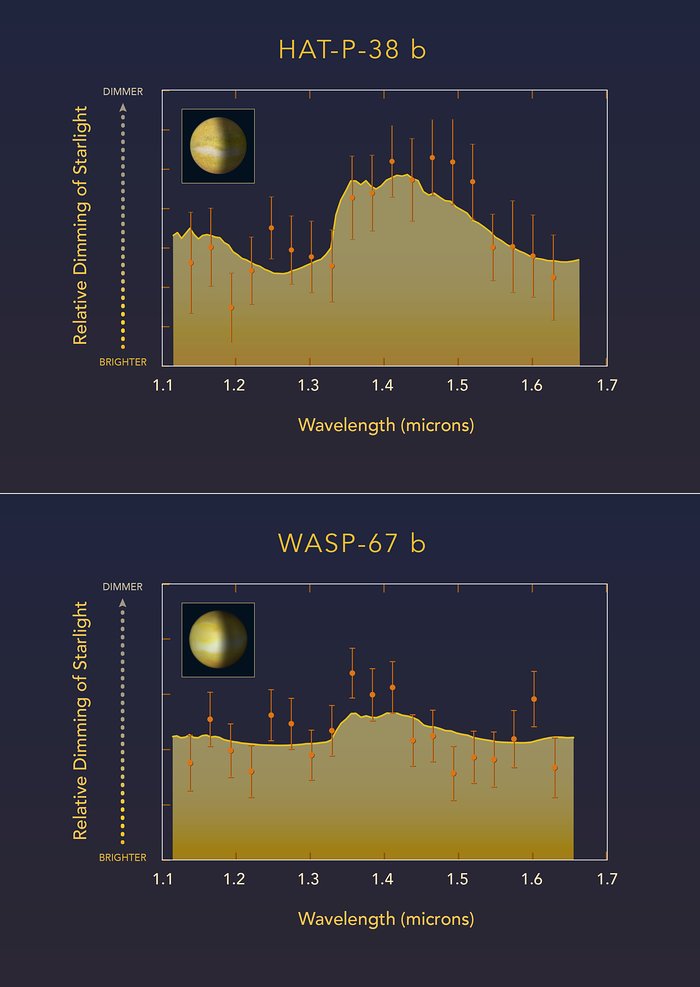Cloudy versus clear atmospheres on exoplanets WASP-67 b and HAT-P-38 b
This diagram compares observations made with the NASA/ESA Hubble Space Telescope of two "hot Jupiter"-class planets orbiting very closely to different sunlike stars. Astronomers measured how light from each parent star is filtered through each planet's atmosphere. Hubble near-infrared observations were used to measure the spectral fingerprint caused by the presence of water vapor in the atmosphere. The exoplanet HAT-P-38 b does show a water signature — indicated by the absorption-feature peak in the spectrum. This is interpreted as indicating the upper atmosphere is free of clouds or hazes. By contrast, a very similar hot Jupiter, WASP-67 b, has a flat spectrum that lacks any water-absorption feature. This suggests that most of the planet's atmosphere is masked by high-altitude clouds.
These results are not peer-reviewed and were presented at the 230th meeting of the AAS.
Links:
Credit:NASA, ESA, and Z. Levy (STScI)
About the Image
NASA caption
| Id: | opo1722b |
|---|---|
| Type: | Chart |
| Release date: | 6 June 2017, 12:01 |
| Size: | 2127 x 3000 px |
About the Object
| Name: | HAT-P-38 b, WASP-67 b |
|---|---|
| Type: | Milky Way : Planet |
| Category: | Exoplanets |
